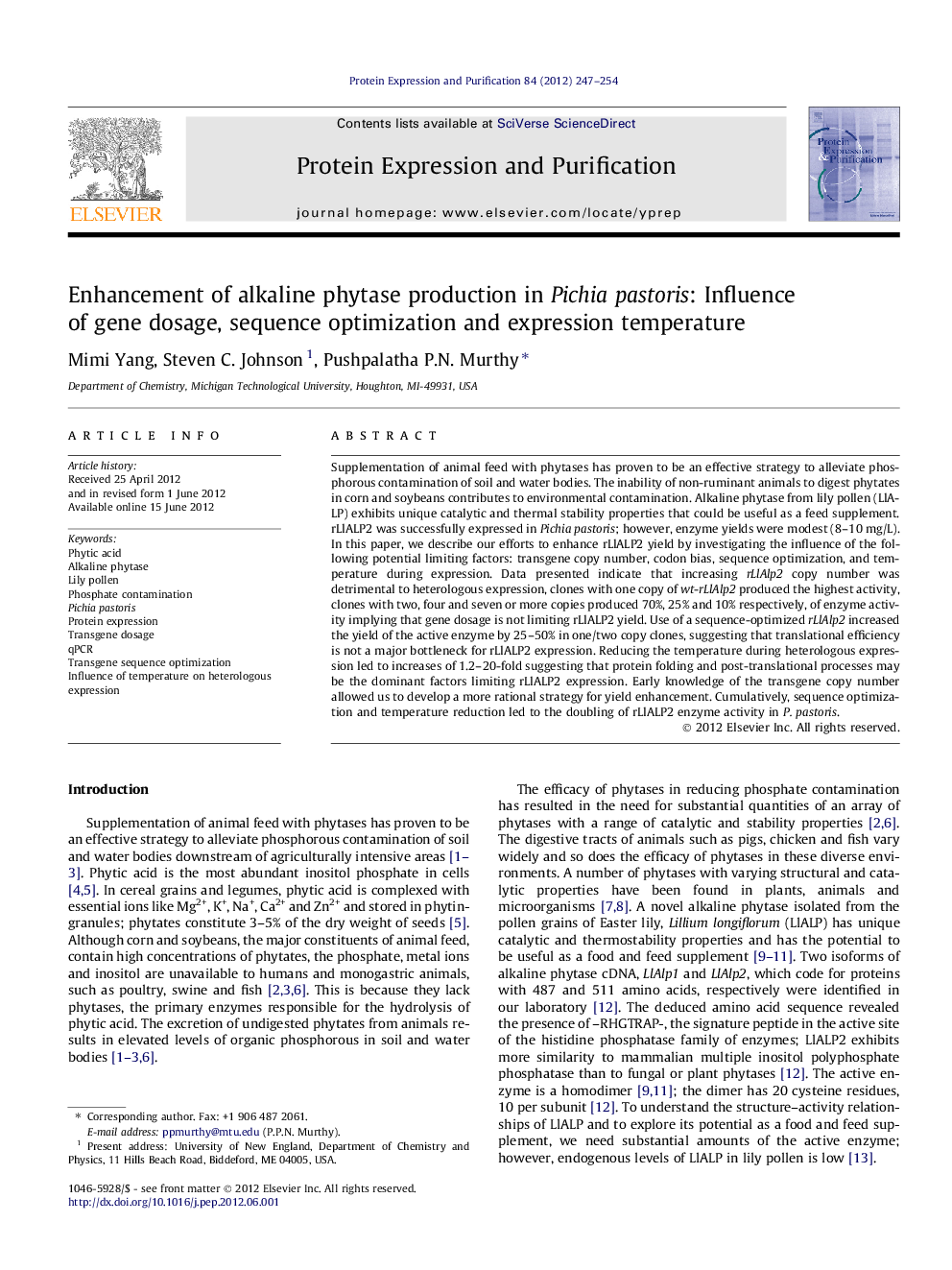| Article ID | Journal | Published Year | Pages | File Type |
|---|---|---|---|---|
| 2020639 | Protein Expression and Purification | 2012 | 8 Pages |
Supplementation of animal feed with phytases has proven to be an effective strategy to alleviate phosphorous contamination of soil and water bodies. The inability of non-ruminant animals to digest phytates in corn and soybeans contributes to environmental contamination. Alkaline phytase from lily pollen (LlALP) exhibits unique catalytic and thermal stability properties that could be useful as a feed supplement. rLlALP2 was successfully expressed in Pichia pastoris; however, enzyme yields were modest (8–10 mg/L). In this paper, we describe our efforts to enhance rLlALP2 yield by investigating the influence of the following potential limiting factors: transgene copy number, codon bias, sequence optimization, and temperature during expression. Data presented indicate that increasing rLlAlp2 copy number was detrimental to heterologous expression, clones with one copy of wt-rLlAlp2 produced the highest activity, clones with two, four and seven or more copies produced 70%, 25% and 10% respectively, of enzyme activity implying that gene dosage is not limiting rLlALP2 yield. Use of a sequence-optimized rLlAlp2 increased the yield of the active enzyme by 25–50% in one/two copy clones, suggesting that translational efficiency is not a major bottleneck for rLlALP2 expression. Reducing the temperature during heterologous expression led to increases of 1.2–20-fold suggesting that protein folding and post-translational processes may be the dominant factors limiting rLlALP2 expression. Early knowledge of the transgene copy number allowed us to develop a more rational strategy for yield enhancement. Cumulatively, sequence optimization and temperature reduction led to the doubling of rLlALP2 enzyme activity in P. pastoris.
► Recombinant alkaline phytase (rLlALP2) was expressed in Pichia pastoris. ► The effect of copy number, gene optimization and temperature on yield was explored. ► Increase in gene copy number was detrimental to enzyme yield. ► Sequence-optimized gene resulted in modest increase (25%) in rLlALP2 yield. ► Reducing temperature by 10 °C led to a 1.2–20-fold increase in rLlALP2.
